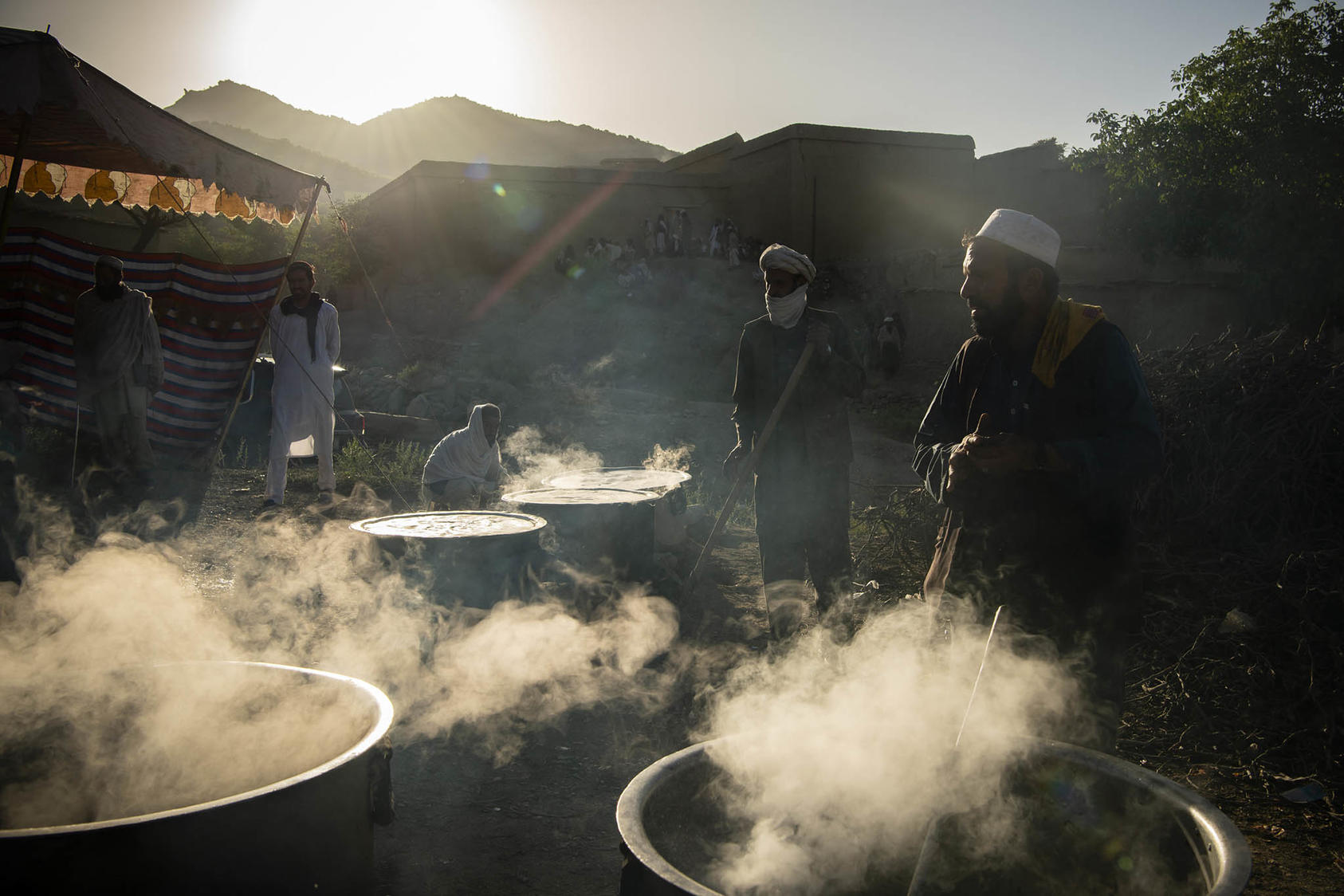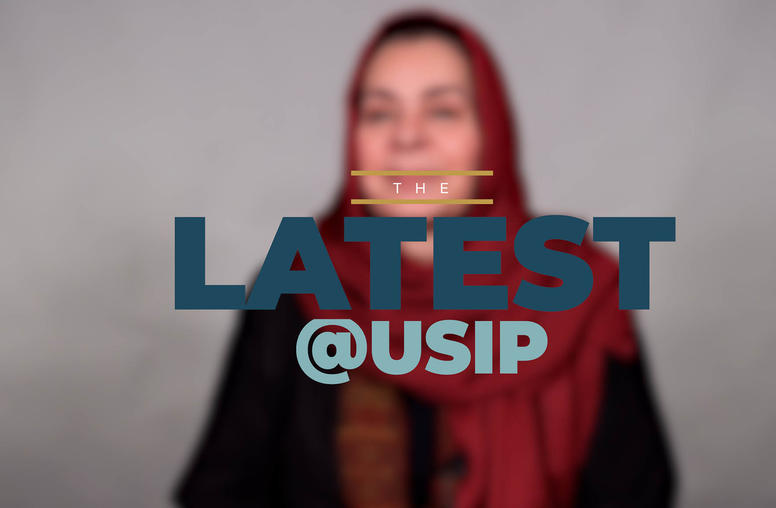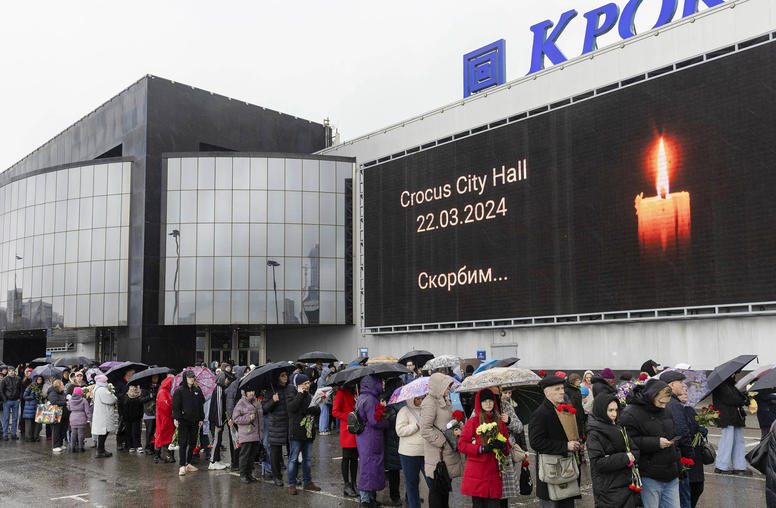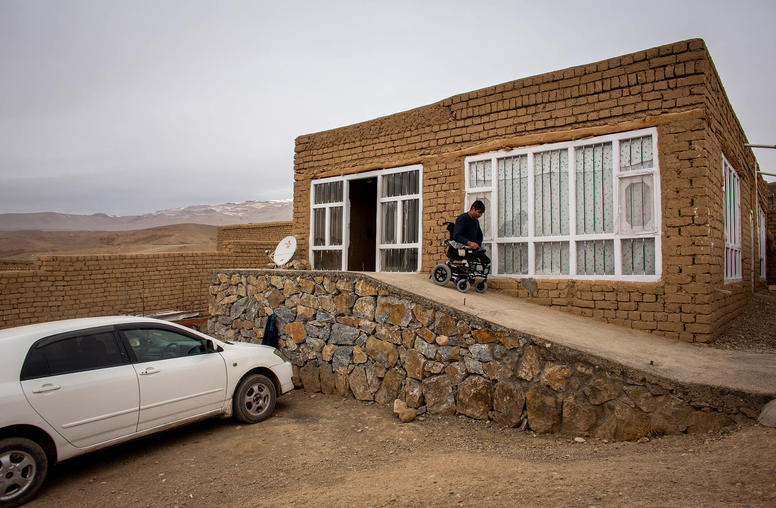A Year into Taliban Rule, Afghans Face Spiraling Economic, Humanitarian Crises
Humanitarian organizations discuss the dire situation in the country and how the United States can help.
The Taliban’s takeover of Afghanistan last year — followed by economic sanctions and other restrictions from the international community — precipitated a dire humanitarian crisis. Afghan women and children, particularly girls, have been hit the hardest. After two decades of hard-won gains, Afghan women have seen their rights evaporate before their eyes and young girls’ dreams for their futures have been squashed. Meanwhile, the country’s economic crisis has left nearly the entire population in hunger, with limited access to health care and other basic needs.

Mercy Corps’ Yasmin Faruki, Save the Children U.S.’s Allyson Neville, World Vision’s Ashley Igwe, Care USA’s Dhabie Brown and Norwegian Refugee Council’s Becky Roby look at what’s driving the humanitarian and economic crises, how it’s impacting access to food and health care, how it is uniquely impacting women and girls and what the United States can do to help. Recent reports and statements on the humanitarian situation in Afghanistan from their organizations and others can be found here.
The 2022 Humanitarian Response Plan for Afghanistan is the largest ever in history for a single country at $4.4 billion. What are the key factors driving humanitarian needs?
Faruki: Today’s humanitarian crisis is primarily an economic one. The crisis is driven by three factors. First, the country is suffering from a lack of access to cash, or liquidity. The credentials revocation of Afghanistan’s Central Bank, known as Da Afghanistan Bank (DAB), halted basic banking transactions and subsequently limited the flow of cash within the country. This flow of cash was crucial to daily market activities for Afghan families, who are now unable to earn incomes and buy basic goods. Second, foreign donors’ decision to suspend development assistance, which supported a majority of Afghanistan’s public sector budget, cut off salary payments for essential government workers in sectors like health and education. Finally, skyrocketing levels of inflation, including more than a 50% increase in the cost of goods since last July, have diminished Afghan families’ ability to purchase food and basic items, despite their widespread supply on the open market.
In addition, Afghanistan continues to battle COVID-19, among other infectious diseases, and recurring natural disasters, including a recent drought and 5.9 magnitude earthquake in June that left over 300,000 Afghans in need of humanitarian assistance. While humanitarian assistance has helped stave off even deeper levels of starvation, more support is needed. Ultimately, no level of humanitarian funding will be able to substitute the role of a functioning economy.
Many of your organizations have recently released reports. What’s one thing that either surprised you or that people should know about the situation in Afghanistan right now?
Neville: This is a children’s emergency. Because of the economic crisis, 97% of households are now unable to meet basic needs, including food and medical care. According to an assessment by Save the Children, an overwhelming majority of children report eating less. Some children describe only eating one meal a day — sometimes consisting of bread and tea only — or only one full meal a week.
The situation for girls is especially concerning. Girls are nearly twice as likely to go to bed hungry on a frequent basis, indicating that they are probably missing out to benefit their male siblings and peers, and more than twice as likely to be out of school compared to boys. They are also facing increased risks of child marriage. More than one in four girls were reported by their caregivers to show signs of depression and anxiety on a daily basis. There isn’t a single area in which the lives and wellbeing of children have not been negatively impacted by the ongoing crisis.
Igwe: Child protection systems in Afghanistan have weakened, and pressure on families from the economic crisis is exposing children to significant risk — child marriage, child trafficking, child labor, psychosocial distress from conflict and displacement and violence, abuse or exploitation closer to home.
A 14-year-old boy we spoke to dropped out of school to help provide for his family of seven. He told us, “Going to school helps me build my future, but how can I survive without eating something? Going to school means missing half of the work I do now, and that means half of my current income, which is never enough for our family."
A devastated father admitted to selling his 7-year-old daughter in marriage to a creditor: “I did not have any alternative, so I agreed to sell my daughter for 200,000 Afs ($2,250) so that I can pay off the debts and feed my children for a while.”
There has been significant press coverage on increased hunger and malnutrition, and challenges in accessing health care. Can you describe what you are seeing in your programs, and how families are being impacted?
Igwe: After August 15, 2021, people who had been in inaccessible areas began seeking health care, and the health system was unable to cope with the additional load. It takes households an average of 90 minutes to reach the nearest health-care center, with some families traveling up to four hours. We are especially concerned about the effect this has on mothers and infants. Access to midwife care can reduce newborn mortality and stillbirth rates by over 80 percent, and pre-term labor and birth by 24%. However, we are finding that less than a third of births are attended by a skilled professional.
Further, malnutrition is rampant. So many children are dying, and even those who survive aren’t able to thrive. Malnourished mothers who are pregnant or breastfeeding are unable to give their babies the essential nutrients they require, which can cause long-lasting harm to brain development and make their children more susceptible to infections and illnesses.
Brown: Nearly the entire population of Afghanistan (95%) is not getting enough to eat, but what’s startling is that the hunger crisis is generally not due to a lack of food — it’s manmade. The markets are full, but people can’t afford to buy what they need. International economic restrictions and the suspension of foreign assistance to Afghanistan have had dire consequences on families. Inflation has driven the price of basic goods like food and fuel out of reach and family incomes have been devastated from job and salary losses. Drought and lack of access to agricultural inputs means we also expect domestic food production to decrease soon, adding another layer to this crisis. Humanitarian assistance has helped prevent catastrophe so far, but it can’t solve the economic and development crisis at the root of this suffering.
Can you say a little more about how women and girls are being uniquely impacted by the crisis?
Brown: CARE recently surveyed 345 Afghan women across nine provinces to better understand the gendered impacts of food insecurity. Women who previously worked outside of the home told us that job and wage loss, intimidation and restrictions on their mobility mean they can no longer earn an income and contribute to their households. Many have also been forced to adopt negative coping mechanisms — such as selling their jewelry, rugs and other personal assets; taking unfavorable loans; or resorting to harmful cooking practices like burning plastic instead of expensive oil — to make sure there is food on table. Unfortunately, Afghanistan’s crippling liquidity crisis has also precipitated a spike in early marriages. One of our young staffers who helped conduct the study wanted U.S. policymakers to know that the key to a brighter future for Afghan women like her is the ability to work, go to school and travel freely so they can support their families and communities.
Igwe: Women must now be accompanied by men (muharam) when they leave their homes. Consequently, women without muharam — like widows and single mothers — have lost their jobs and are struggling to find ways to survive. Moreover, girls can no longer be educated past sixth grade. Afghanistan has fewer female teachers and fewer girls in school than at any point over the last two decades. Soon, fewer and fewer female educators will exist to teach the next generation of girls. Many girls feel that they have no future in Afghanistan.
As families struggle to provide, young girls are given in marriage so their dowry can be used to care for the children who remain at home. We spoke to a 12-year-old girl. To cancel her family’s debt, she is promised to a man with grandchildren her age. She told us, “Getting a divorce is the only dream I have in my life.”
What actions can U.S. policymakers take to address the current crisis?
Roby: Going forward, there should be proactive engagement with financial institutions to encourage them to facilitate the financial transactions of aid agencies and the private sector operating in Afghanistan. U.N. member states should provide legal guidance and incentives to address the chilling effect of sanctions on private sector actors. This should include efforts to encourage financial institutions — including banks, payment platforms and other systems, such as SWIFT — to engage with Afghanistan.
The United States, along with other influential U.N. member states, can also take steps to secure mechanisms for providing technical assistance to DAB. This includes building DAB’s capacity and independence as a necessary step toward restoring the commercial banking sector and reconnecting the Afghan economy to the global economy. Such assistance is essential in maintaining macroeconomic stability and restoring confidence in the banking system. Furthermore, steps should be taken to resume the printing and circulation of Afghani banknotes. A functioning banking sector and economy are essential to prevent a perpetual cycle of humanitarian need.
Neville: In addition to the actions above, the United States should continue to demonstrate leadership in funding the humanitarian response. The United States has been incredibly generous, but humanitarian needs — globally and in Afghanistan — are at record-high levels. Support must expand to meet these needs. Additionally, there must be a plan to replenish development funding, including resources that were repurposed for humanitarian assistance. The United States and others must ensure that funding resumes for key sectors that had long been supported by development assistance. A humanitarian-only response is insufficient, and the lack of development funding also undermines the economy. One step would be to end the pause in teacher salary payments through the Afghanistan Reconstruction Trust Fund. Finally, work must be done to encourage the Taliban to ensure women can access and participate in the humanitarian response, girls of all ages can attend school and there is non-interference in humanitarian activities.
Dhabie Brown is a senior humanitarian policy advocate at CARE USA.
Yasmin Faruki is a senior policy advisor at Mercy Corps.
Ashley Igwe is a humanitarian and emergency affairs policy advisor at World Vision.
Allyson Neville is a senior advisor at Save the Children U.S.
Becky Roby is an advocacy manager at Norwegian Refugee Council.



